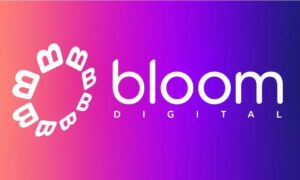Introduction:
In the dynamic world of digital marketing, where online visibility is a cornerstone of success, understanding the distinctions between Search Engine Optimization (SEO) and Search Engine Marketing (SEM) is pivotal. These two strategies, while interconnected, serve distinct purposes in the quest for enhanced online presence and traffic. In this comprehensive guide, we delve into the key differences between SEO and SEM, providing insights into when to strategically deploy each to maximize your digital marketing efforts.
Defining SEO and SEM:
Before delving into the differences, let’s clarify what SEO and SEM entail.
SEO (Search Engine Optimization): SEO is the organic approach to enhancing a website’s visibility on search engine results pages (SERPs). It involves optimizing various elements on a website to improve its relevance and authority in the eyes of search engines, ultimately aiming to secure higher rankings for specific keywords.
SEM (Search Engine Marketing): SEM, on the other hand, is a broader term that encompasses paid strategies to boost a website’s visibility on search engines. It involves activities like paid advertising, commonly known as Pay-Per-Click (PPC) advertising, where businesses bid on keywords to have their ads displayed when users search for those terms.
Key Differences between SEO and SEM:
Nature of Traffic:
SEO: Generates organic traffic, attracting visitors naturally through search engine rankings.
SEM: Drives paid traffic through advertisements displayed on search engine results pages.
Transition: While SEO focuses on the long-term, sustainable growth of organic traffic, SEM offers a more immediate and measurable way to attract visitors through paid advertising.
Cost Structure:
SEO: Generally incurs costs related to optimization efforts, content creation, and technical improvements but does not involve direct payments for clicks.
SEM: Involves direct costs, with advertisers paying for each click on their ads or other predefined actions.
Transition: The cost structure is a fundamental distinction – SEO demands ongoing investment in content and optimization efforts, whereas SEM involves immediate costs tied to user interactions with paid advertisements.
Speed of Results:
SEO: Requires time to see substantial results, as search engines need to index and recognize the improvements made on a website.
SEM: Offers immediate visibility and results as soon as the paid advertising campaign is launched.
Transition: While SEO is a long-term strategy, SEM provides businesses with the agility to achieve quick results and capitalize on immediate marketing needs.
Sustainability:
SEO: Establishes sustainable, long-term visibility on search engines with consistent effort and adherence to best practices.
SEM: Offers immediate visibility but is dependent on ongoing ad spend; visibility diminishes once the ad campaign is paused.
Transition: SEO’s sustainability lies in the gradual buildup of authority and relevance, whereas SEM’s visibility is directly tied to the continuous investment in paid advertising.
Visibility on SERPs:
SEO: Primarily focuses on improving organic rankings and appearing in the non-paid search results section.
SEM: Involves paid advertisements displayed prominently above or alongside organic results on SERPs.
Transition: SEO aims for high organic rankings, while SEM guarantees immediate visibility through paid ads, often positioned prominently to capture user attention.
Keyword Strategy:
SEO: Involves optimizing for a broad range of relevant keywords, targeting a comprehensive set of search queries.
SEM: Utilizes a targeted keyword strategy based on bidding for specific keywords, allowing businesses to control when their ads appear.
Transition: SEO casts a wider net, optimizing for various keywords, while SEM’s keyword strategy is focused on bidding for select keywords to drive targeted traffic.
When to Use SEO:
Building Long-Term Authority:
Situation:
When aiming for sustainable, long-term visibility and authority in your industry.
Strategy:
Focus on creating high-quality, relevant content, optimizing on-page elements, and building a strong backlink profile.
Establishing Organic Credibility:
Situation:
When seeking to establish credibility and trust among users searching for your products or services.
Strategy:
Invest in ethical SEO practices, provide valuable content, and prioritize user experience to build organic credibility.
Cost-Effective Long-Term Strategy:
Situation:
When operating on a budget and looking for a cost-effective way to drive organic traffic.
Strategy:
Implement sustainable SEO practices, emphasizing content creation, keyword optimization, and technical improvements over time.
Targeting Broader Keywords:
Situation:
When aiming to capture a broad audience and rank for a wide range of relevant keywords.
Strategy:
Optimize content for a diverse set of keywords, catering to different user intents and queries within your niche.
When to Use SEM
Immediate Visibility Needs:
Situation:
When launching a new product, promotion, or time-sensitive campaign requiring immediate visibility.
Strategy:
Invest in a targeted SEM campaign to ensure instant visibility and capture the attention of potential customers.
Testing and Optimization:
Situation:
When testing new keywords, ad copy, or landing pages to gather quick data for optimization.
Strategy:
Use SEM campaigns to experiment with different elements and gather insights that can inform ongoing SEO efforts.
Competing for High-Value Keywords:
Situation:
When facing stiff competition for high-value keywords in your industry.
Strategy:
Use SEM to bid on competitive keywords and secure a visible position on SERPs, complementing your organic SEO efforts.
Promoting Special Offers or Events:
Situation:
When running promotions, sales, or time-sensitive events that require immediate attention.
Strategy:
Leverage SEM to create targeted ad campaigns promoting special offers, ensuring timely visibility.
Strategies for Integration
Synergizing SEO and SEM Campaigns:
Approach:
Use both SEO and SEM to complement each other, with SEO focusing on long-term organic growth and SEM providing immediate visibility for targeted campaigns.
Benefit:
Achieve a balanced approach, maximizing both organic and paid channels to capture a broader audience.
Data Sharing and Analysis:
Approach:
Share insights and data between SEO and SEM campaigns to inform strategies.
Benefit:
Uncover valuable information about user behavior, keyword performance, and campaign effectiveness, optimizing both channels based on shared insights.
Strategic Keyword Mapping:
Approach:
Align SEO and SEM keyword strategies to avoid cannibalization and ensure a cohesive approach.
Benefit:
Prevent conflicts between organic and paid efforts, ensuring that both channels work harmoniously to enhance overall visibility.
Unified Landing Page Optimization:
Approach:
Optimize landing pages for both SEO and SEM campaigns to provide a consistent user experience.
Benefit:
Enhance user satisfaction, maintain message consistency, and improve the chances of conversion for both organic and paid traffic.
Conclusion:
In the ever-evolving landscape of digital marketing, understanding the nuances of SEO and SEM is crucial for businesses seeking to maximize their online presence. While each strategy offers unique benefits, the most effective approach often involves a synergistic integration of both SEO and SEM. Whether aiming for long-term organic growth or immediate visibility, businesses that strategically leverage both channels can navigate the complexities of the digital landscape, ensuring a holistic and optimized approach that aligns with their overarching marketing goals.



































